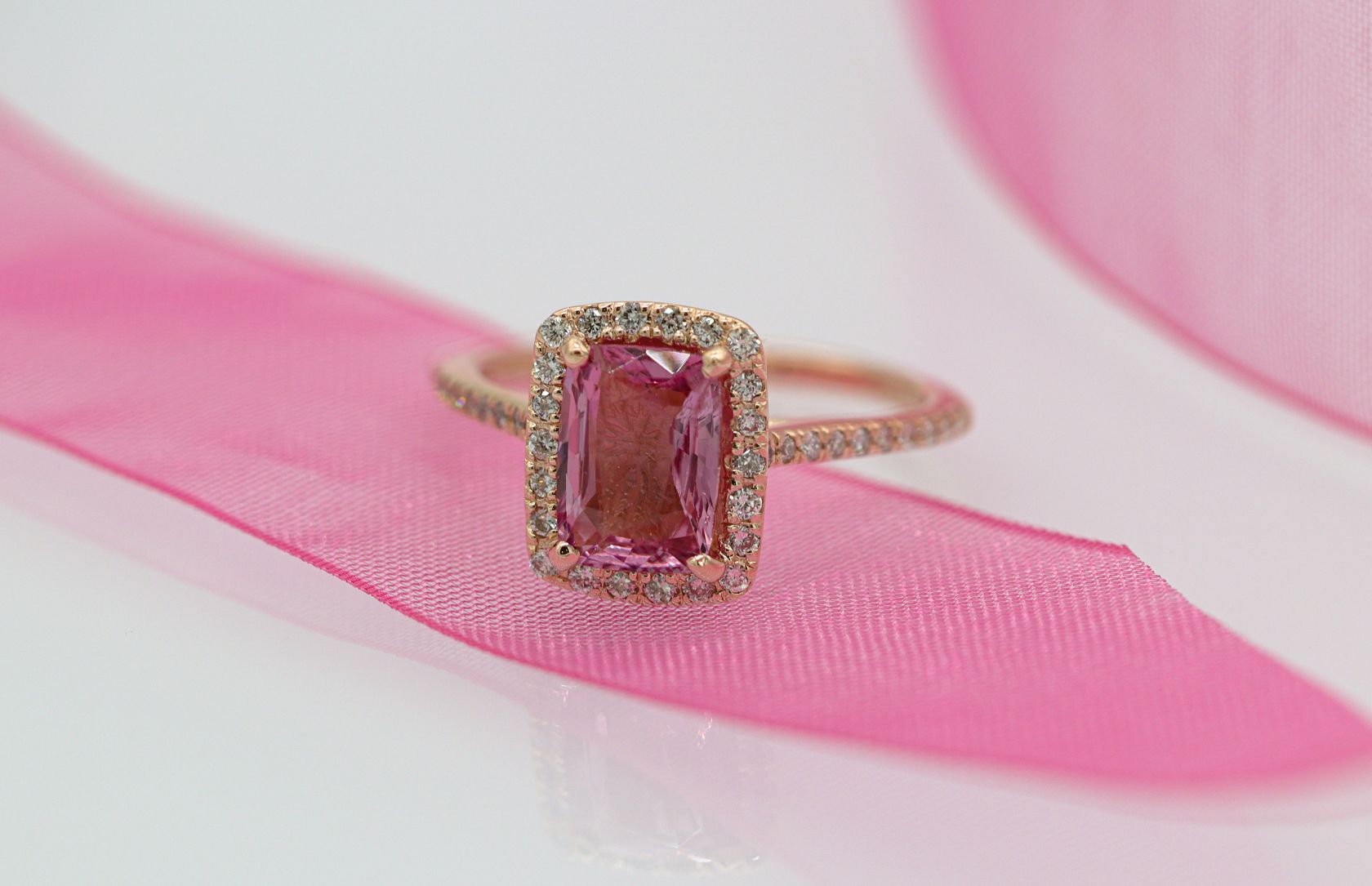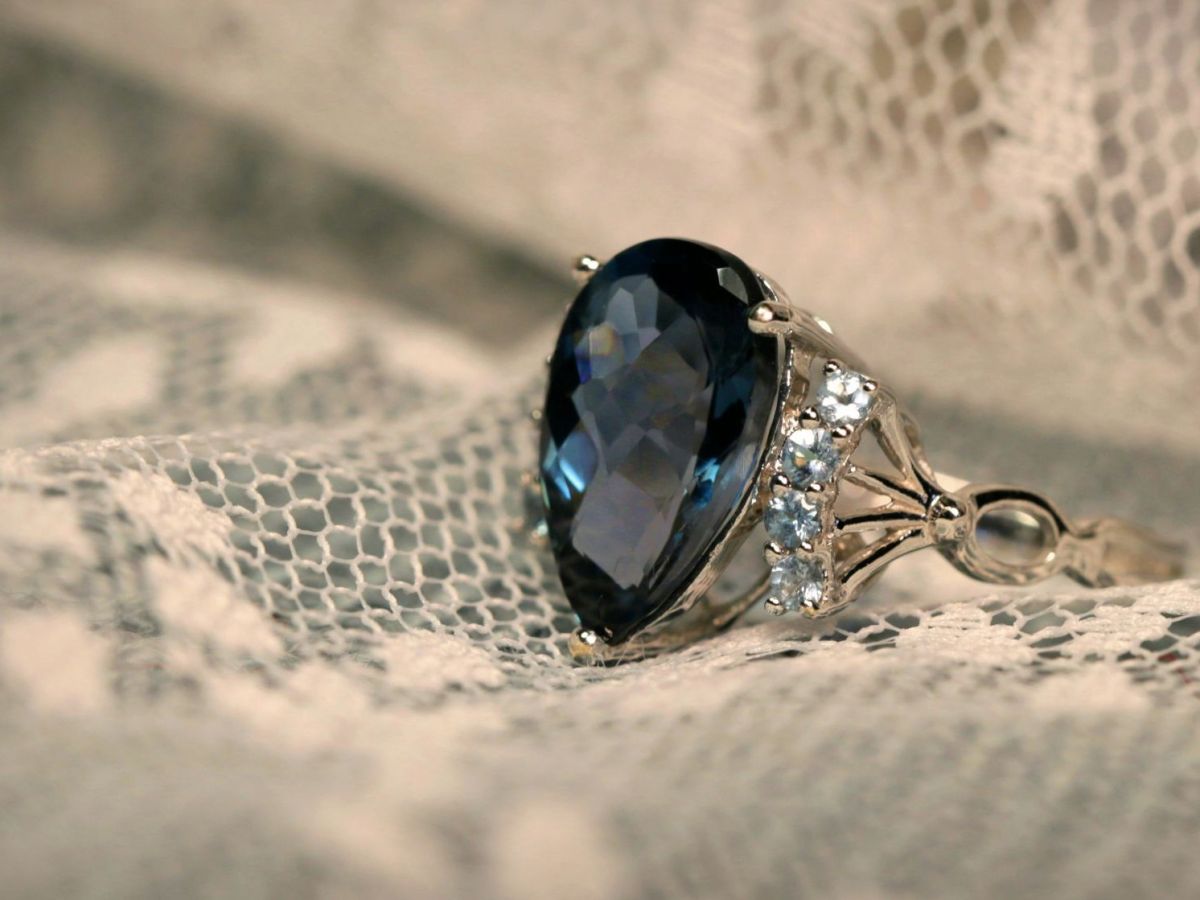Some say that your birthstone jewellery will bring good luck, health, and protection, and each stone has its own unique meaning. King Charles (when he was Prince Charles) gave the late Princess Diana an engagement ring with a whopping 12ct oval Ceylon sapphire surrounded by 14 round diamonds. It’s now worn by Princess Katherine, who was gifted it on her engagement to Prince William. In 1981, the ring was apparently purchased for £28,000, but today, it is estimated to be worth up to a mindboggling £300,000, and started a trend for sapphires of that cut and colour, and even the style of the ring itself.
Sapphire colours
Sapphires come in various shades of blue to yellow, via soft pink and emerald green, and the stone itself belongs to the corundum family, which includes rubies. Untreated sapphires are rare, but more about that further on.
The hardest to come by these days are Kashmiri Blue Sapphires. These have been unavailable in the marketplace for some time, as mining was halted in 1938, primarily because in such a harsh and remote terrain, intensive digging had exhausted the supply, and political instability didn’t help. These were difficult conditions that made further exploration and extraction impractical.
Sri Lanka is often called the ‘Sapphire Capital of the World’, and the famous ‘Star of India’ sapphire is a massive 563.35-carat star stone that was found in Sri Lanka in the 1700’s, famous for the prominent six-rayed star asterism visible on both sides of the stone, and is one of the largest star sapphires in the world. To me, it doesn’t look like a sapphire at all because it hasn’t been cut in the traditional fashion, but is cabochon-cut, meaning it has a smooth, rounded dome, and so big it would comfortably sit in the palm of your hand. A star sapphire displays a unique optical phenomenon called asterism, where a star-like pattern of light appears on the gemstone's surface when viewed under a direct light source, and is created by tiny, needle-like inclusions (tiny faults or imperfections) within the sapphire. It was donated to the American Museum of Natural History in New York City in 1901 by American financier and investment banker J P Morgan, and has an estimated value of between $100 million and $300 million.
Inclusions
Most sapphires contain inclusions, and ones without any have most likely been heat-treated to a high temperature, which is a widely accepted practice in the gem trade to improve their colour and clarity. It is estimated that around 90-95% of sapphires have undergone some form of heat treatment; therefore, untreated sapphires are considered rarer and more valuable by collectors.

The demand for sapphires has long exceeded the natural supply, and gem-quality corundum is rarer than diamonds. While corundum is relatively common, gem-quality specimens with desirable colours and clarity are scarce. Sapphires and rubies were some of the first gemstones to be synthesised over 100 years ago, and manufacturers still use some of the same methods used then to synthesise sapphires today.
Creating Fakes
There are two methods for artificially creating sapphires: melt processes, which involve melting aluminium oxide into a sapphire droplet, and solution processes, which grow sapphire crystals in a solution. Distinguishing lab-grown sapphires from natural sapphires is challenging, but each artificial creation method leaves tell-tale signs that an expert gemologist can identify.
Can a layman tell the difference between natural sapphires and lab-grown sapphires?
It isn’t easy. Look for inclusions, test its hardness by scratching it with a harder material (diamonds are the only thing harder), or observe how it reacts to a breath test, which can be a quick way to assess the authenticity of a sapphire, though it's not definitive. Breathing on both real sapphires and heat-treated sapphires will cause a fog on the surface of the gem due to its high thermal conductivity, which will evaporate almost instantly. Fakes, especially those made of glass, tend to hold moisture longer and take several seconds to clear up.
Sapphires carry rich symbolism and folklore, and are often associated with royalty, wisdom, and divine blessings, with some even believing they possess protective powers.
Marilyn writes regularly for The Portugal News, and has lived in the Algarve for some years. A dog-lover, she has lived in Ireland, UK, Bermuda and the Isle of Man.















